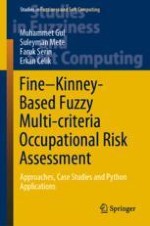This book presents a number of approaches to Fine–Kinney–based multi-criteria occupational risk-assessment. For each proposed approach, it provides case studies demonstrating their applicability, as well as Python coding, which will enable readers to implement them into their own risk assessment process.
The book begins by giving a review of Fine–Kinney occupational risk-assessment methods and their extension by fuzzy sets. It then progresses in a logical fashion, dedicating a chapter to each approach, including the fuzzy best and worst method, interval-valued Pythagorean fuzzy VIKOR and interval type-2 fuzzy QUALIFLEX.
This book will be of interest to professionals and researchers working in the field of occupational risk management, as well as postgraduate and undergraduate students studying applications of fuzzy systems.
